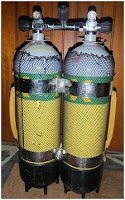Stingrays are a group of rays, which are cartilaginous fishes related
to sharks. They are classified in the suborder Myliobatoidei of the
order Myliobatiformes, and consist of eight families: Hexatrygonidae (sixgill
stingray), Plesiobatidae (deep water stingray), Urolophidae (stingarees), Urotrygonidae
(round rays), Dasyatidae (whiptail stingrays), Potamotrygonidae (river
stingrays), Gymnuridae (butterfly rays), and Myliobatidae (eagle rays).
Most stingrays have one or more
barbed stings (modified from dermal denticles) on the tail, which are used
exclusively in self-defense. The stinger may reach a length of approximately
35 cm (14 in), and its underside has two grooves with venom glands.
The stinger is covered with a thin layer of skin, the integumentary sheath, in
which the venom is concentrated. A few members of the suborder, such as the manta
rays and the porcupine ray, do not have stingers.
Stingrays are common in coastal tropical
and subtropical marine waters throughout the world, and also includes species
found in warmer temperate oceans, such as Dasyatis thetidis, and those
found in the deep ocean, such as Plesiobatis daviesi. The river
stingrays, and a number of whiptail stingrays (such as the Niger stingray), are
restricted to fresh water. Most myliobatoids are demersal, but some, such as
the pelagic stingray and the eagle rays, are pelagic.
While most stingrays are relatively
widespread and not currently threatened, for several species (for example Taeniura
meyeni, D. colarensis, D. garouaensis, and D. laosensis),
the conservation status is more problematic, leading to them being listed as vulnerable
or endangered by IUCN. The status of several other species are poorly known,
leading to them being listed as Data Deficient.







